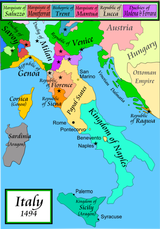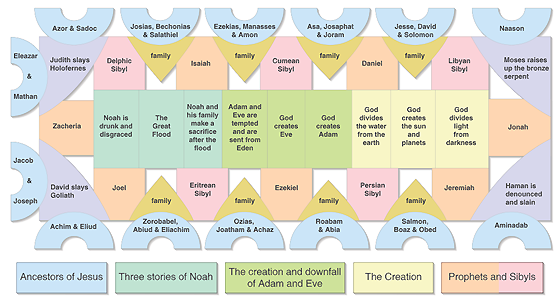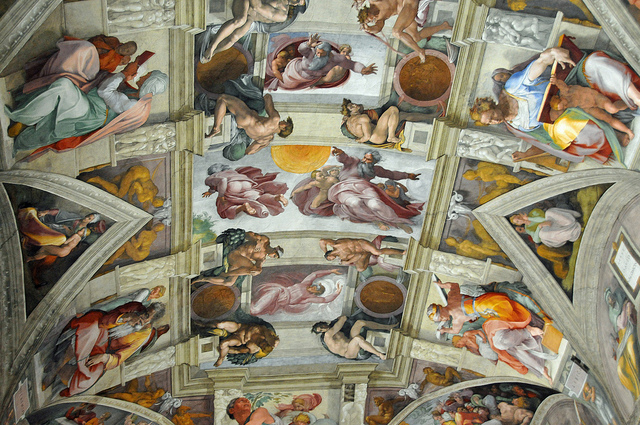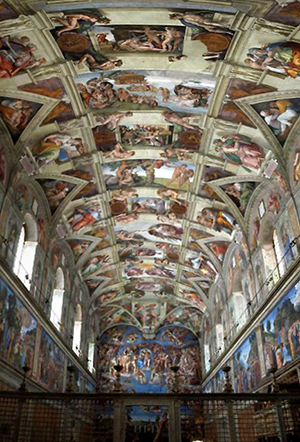Art History in Detail..... more info than the basic slides

Here are some interesting videos and insights into the work we study in the Italian Renaissance unit. This information is for entertainment and information purposes only. You are not required to learn this for the exam, but I think the information is both relevant and interesting, so I have put together a collection for you here.
Ever wondered how a fresco was done? This video shows the application of the fresco technique in great detail- used by artists throughout the Renaissance period and beyond.
Explore the Indirect Lost Wax Method for bronze casting- ever wonder how Donatello's David was cast? Watch this youtube video that explains and shows us how it was done.
This quick video is regarding the artist Cimabue. He was one of the earliest artist to break free of the Italo-Byzantine style and focus more on the humanism of the figure. The best part of this video is you can see the actual size of the work - which is something that is not evident from just looking at the image online.
An excellent in-depth explanation of Masaccio's Tribute Money including a look at the Brancacci Chapel interior where the fresco resides.
Brunelleschi & Ghiberti compete against one another for the commission of the Gates Of Paradise! This gives an understanding of both bronze relief panels of the Sacrifice of Isaac.
Fra Angelico's Annunciation fresco is a large scale mural set in the convent of San Marco in Florence. The Annunciation tells the story of the Archangel Gabriel coming to tell Mary that she would conceive and become the Mother of Jesus, the Son of God.
Uccello's depiction of the Battle of San Romano- depicting the victory of the Florentine's over the Siennese. Strangely gothic, lacking in accurate perspective, yet showing the chaos of battle. A painting that is one of a series of three large scale works meant to capture a moment in time.
Donatello- more than just a Teenage Mutant Ninja Turtle! Here is one of Donatello's most famous works, David.
How did Brunelleschi create the duomo on the Florence Cathedral? PBS NOVA series looks in depth at the Great Cathedral Mystery. Check it out!
|
|
|
The Sistine Chapel Ceiling
Here is a diagram map that illustrates all of the Old Testament scenes depicted by Michelangelo on the Sistine Chapel ceiling.
The Last Supper
The identity of the individual apostles in The Last Supper is confirmed by The Notebooks of Leonardo Da Vinci. From left to right in the painting, they are depicted in four groups of three, and react to the news as follows:
• GROUP 1
Bartholomew, James the Less and Andrew are all surprised.
• GROUP 2
Judas Iscariot is taken aback; next to him, Peter holds a knife and looks stormy, while the boyish John, the youngest apostle, simply swoons.
• GROUP 3
Thomas is upset; James is shocked. Philip wants an explanation.
• GROUP 4
In the final group of three, Jude Thaddeus and Matthew turn to Simon the Zealot for answers.
In short, the painting captures twelve individuals in the midst of querying, gesticulating, or showing various shades of horror, anger and disbelief. It's live, it's human and it's in complete contrast to the serene and expansive pose of Jesus himself.
JUDAS:
In most versions of The Last Supper, Judas is the only disciple not to have a halo, or else is seated separately from the other apostles. Leonardo, however, seats everyone on the same side of the table, so that all are facing the viewer. Even so, Judas remains a marked man. First, he is grasping a small bag, no doubt symbolizing the 30 pieces of silver he has been paid to betray Jesus; he has also knocked over the salt pot - another symbol of betrayal. His head is also positioned in a lower position than anyone in the picture, and is the only person left in shadow.
Mathematical Symbolism
The painting contains a number of allusions to the number 3, (perhaps symbolizing the Holy Trinity). The disciples are seated in groups of three; there are three windows, while the figure of Jesus is given a triangular shape, marked by his head and two outstretched arms.
• GROUP 1
Bartholomew, James the Less and Andrew are all surprised.
• GROUP 2
Judas Iscariot is taken aback; next to him, Peter holds a knife and looks stormy, while the boyish John, the youngest apostle, simply swoons.
• GROUP 3
Thomas is upset; James is shocked. Philip wants an explanation.
• GROUP 4
In the final group of three, Jude Thaddeus and Matthew turn to Simon the Zealot for answers.
In short, the painting captures twelve individuals in the midst of querying, gesticulating, or showing various shades of horror, anger and disbelief. It's live, it's human and it's in complete contrast to the serene and expansive pose of Jesus himself.
JUDAS:
In most versions of The Last Supper, Judas is the only disciple not to have a halo, or else is seated separately from the other apostles. Leonardo, however, seats everyone on the same side of the table, so that all are facing the viewer. Even so, Judas remains a marked man. First, he is grasping a small bag, no doubt symbolizing the 30 pieces of silver he has been paid to betray Jesus; he has also knocked over the salt pot - another symbol of betrayal. His head is also positioned in a lower position than anyone in the picture, and is the only person left in shadow.
Mathematical Symbolism
The painting contains a number of allusions to the number 3, (perhaps symbolizing the Holy Trinity). The disciples are seated in groups of three; there are three windows, while the figure of Jesus is given a triangular shape, marked by his head and two outstretched arms.




